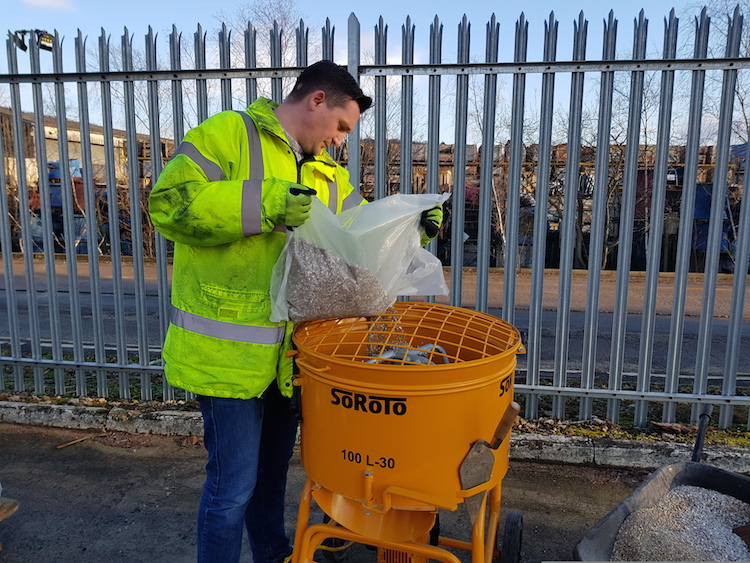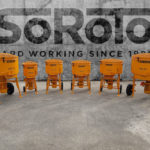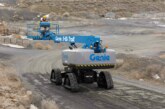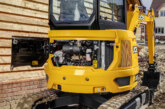 What are the advantages of forced action mixers? Leading manufacturer SoRoTo explains all.
What are the advantages of forced action mixers? Leading manufacturer SoRoTo explains all.
The cement mixer, also known as the ordinary drum mixer, is the preferred mixer in most parts of the world. The reason being, that in most parts of the world, they just don’t know that there’s an alternative but the fact is that forced action mixers can be used in a huge range of applications, including the mixing of concrete, render, mortar, the in-vogue resin bound gravel, screed and plaster.
So what are the benefits? The ordinary drum mixer doesn’t have gears, and often very little copper in the windings of the motor. The shaft only drives the V-belt in a cement mixer, so there’s no need for it to be as strong as the shaft and gearmotor of a forced action mixer. On a forced action mixer, the shaft drives a number of gears, and the force needs to be able to reach the shovels/blades – and they need to be able to mix a potentially tough product. This is why the motor and gear have to be powerful in a forced action mixer.
Because of the forced action mixers superior force – and because of its construction – the mixing time is cut short. And it is much easier to estimate the mixing time, with most only taking around three to five minutes. But this doesn’t mean that you should always choose a forced action mixer over the regular cement mixer. They each have their qualities and attributes.
For instance: it is not preferable to mix earth-moist concrete (EMC) in a cement mixer. The mixture often gets too wet, so that when you screed or plaster, water will keep surfacing – or some of the product will turn into small snowball-like, compact balls.

In addition, a quality tumble mixer is sometimes better at mixing concrete with aggregate than a forced action mixer is. This mix is often easier to get out of a tumble mixer’s drum than out of the chute of the latter, and this kind of concrete is often laid in a thick layer, where all the molecules don’t have to be activated, and so there is no need for the efficient forced action mixer. If you do mix concrete with aggregate in a forced action mixer, make sure to use mixing arms with rubber blades.
SoRoTo was established in 1986 and is a leading manufacturer and supplier of forced action mixers and belt conveyors. Its original designs have built a reputation for durability, with a service life that has extended to more than twenty years. Indeed, the company spends at least three years testing and developing its units before they are launched to market, and they are produced in collaboration with end user demands.
That’s why there are a number of features, like a bracket mounted on the machine for holding a brick trowel, and a bucket stand, that will immediately appeal to tradespeople, whilst safety is also acknowledged with a safety grid in front of the discharge chute, as well as a safety switch.

Models 200L and 300L are equipped with a spare power outlet for work lighting, or industrial vacuum cleaners, and the machines are equipped with a rubber strap that ensures the grid lid does not open during use or transport. Given that the SoRoTo mixer arms are removed without tools cleaning, or interchanging between rubber/steel systems, is made much easier.
Loading wheels and the use of custom-made lowered bolts also ease your loading of the machine onto a truck bed, and telescopic legs can be adjusted between 100 and 140cm, depending on the model. Dust is now one of the industry’s major safety concerns, and this is something that SoRoTo has addressed with the option of a dust controller.
The SoRoTo gear motor is a strong engine that provides maximum power and minimum load, and is available in 110V, 230V and 400V outputs. The manufacturer’s concrete mixer range has a capacity of up to 850 litres, whilst the SoRoTo Standard (CMS) is designed for smaller jobs. SoRoTo Pro (CMP) is somewhat more powerful, with two or three double mixing blades, and is targeted at rental companies and contractors. SoRoTo Economic (CME) is the low-cost model. The company also offers concrete mixers with an optional trailer coupling (CMT), extra-large models (CMX, CMR), smaller models which can be transported as a wheelbarrow (CMW) – and then there is the quiet model (CMG).









